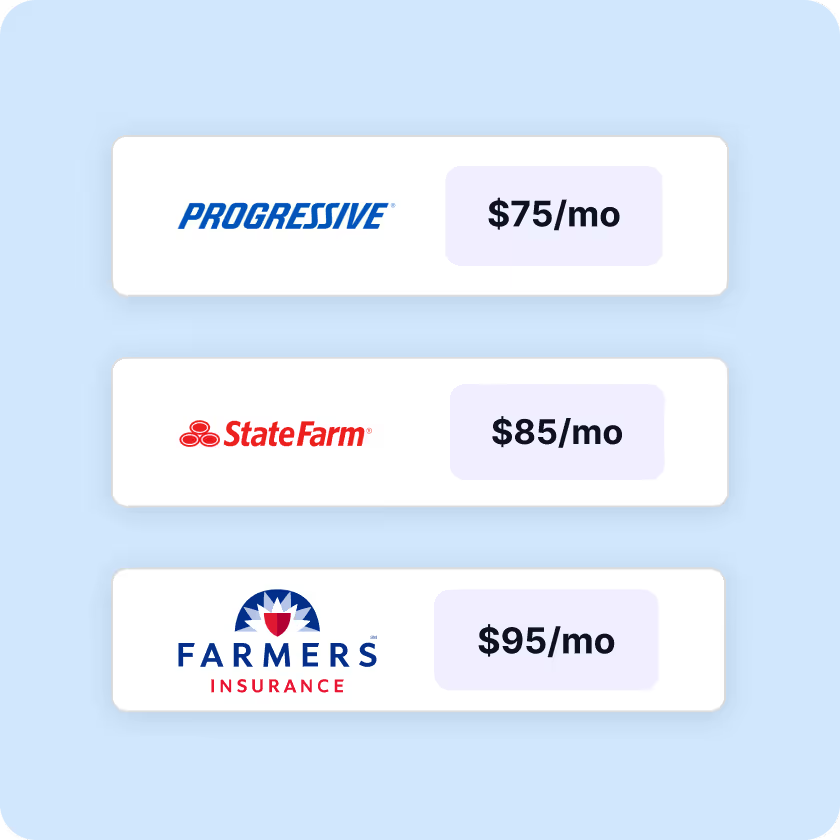
Kudos has partnered with CardRatings and Red Ventures for our coverage of credit card products. Kudos, CardRatings, and Red Ventures may receive a commission from card issuers. Kudos may receive commission from card issuers. Some of the card offers that appear on Kudos are from advertisers and may impact how and where card products appear on the site. Kudos tries to include as many card companies and offers as we are aware of, including offers from issuers that don't pay us, but we may not cover all card companies or all available card offers. You don't have to use our links, but we're grateful when you do!
Chase Sapphire Preferred® Card vs. American Express® Gold Card: Which Is Better in 2025?
July 1, 2025


Editor’s Picks
- Choose the Chase Sapphire Preferred® Card if you want a low-annual-fee travel card with strong all-around travel value, excellent global acceptance, and flexible redemptions.
- Choose the American Express® Gold Card if you spend heavily on dining and U.S. supermarkets and will reliably use the Uber and dining credits.
Chase Sapphire Preferred® Card Breakdown
[[ SINGLE_CARD * {"id": "509", "isExpanded": "false", "bestForCategoryId": "15", "bestForText": "Frequent Travelers", "headerHint": "Exceptional Value"} ]]
Why We Like It
- It offers a robust rewards structure that earns you extra points on everyday spending categories like dining, online groceries, and travel.
- Cardholders get access to valuable travel protections and pay no foreign transaction fees, making it a great companion for trips abroad.
- After using the $50 annual hotel credit, you only need to spend about $100 per month on dining, online groceries, or select streaming services to offset the annual fee (publisher-formulated estimate).
Pros
- A generous welcome offer to kickstart your points balance.
- Flexible rewards program with valuable airline and hotel transfer partners.
- Comprehensive travel protections and no foreign transaction fees.
Cons
- It comes with an annual fee, which may not be suitable for infrequent travelers.
- Lacks premium travel perks like airport lounge access that are common with higher-tier travel cards.
- Point redemptions are most valuable when used for travel, offering less value for other options like cash back.
American Express® Gold Card Breakdown
[[ SINGLE_CARD * {"id": "118", "isExpanded": "false", "bestForCategoryId": "15", "bestForText": "Foodies", "headerHint": "Generous Dining Rewards"} ]]
Why We Like It
- It offers exceptional rewards on dining at restaurants and groceries at U.S. supermarkets, making it a top choice for foodies.
- The card includes up to $240 in annual statement credits for dining and Uber that help offset its annual fee.
- If you maximize the up to $240 in annual dining and Uber credits, the remaining $85 cost of the $325 annual fee (See Rates & Fees) can be offset by spending just $2,125 in 4X categories (publisher-formulated estimate).
Pros
- High rewards earning potential on dining at restaurants worldwide and at U.S. supermarkets.
- Valuable annual statement credits for dining and Uber that can help offset the annual fee. Terms apply.
- Flexible Membership Rewards® points can be transferred to popular airline and hotel partners, and the card has no foreign transaction fees. Terms apply.
Cons
- The card has a significant annual fee that may be hard to justify if you don't take full advantage of its credits and rewards.
- Annual statement credits are broken down into monthly increments, which can be restrictive and makes them harder to use. Terms apply.
- Some benefits require manual enrollment, and American Express is not as widely accepted as Visa or Mastercard, particularly at smaller merchants or internationally.
Terms apply to American Express benefits and offers. Enrollment may be required for select American Express benefits and offers. Visit americanexpress.com to learn more. Eligibility and benefit level varies by Card. Terms, Conditions, and Limitations Apply. Please visit americanexpress.com/benefitsguide for more details. Underwritten by Amex Assurance Company.
Comparing the Amex Gold vs Chase Sapphire Preferred
Categories
Dining & Groceries
- Amex Gold dominates for day-to-day food spending with:
- 4× restaurants worldwide
- 4× U.S. supermarkets, up to $25,000 per year
- Sapphire Preferred earns 3× on dining and online groceries—but can’t match the Gold’s 4× multiplier.
Winner: Amex Gold for food-centric households.
Travel Purchases
- Sapphire Preferred:
- 5× on travel booked through Chase Travel
- 2× on other travel
- Amex Gold:
- 3× on flights via airlines or amextravel.com
- No bonus multiplier for general travel spending
Winner: Sapphire Preferred for general travel spending and portal bookings.
Winner for flights specifically: Depends—Amex’s 3× vs. Sapphire’s 2× (outside the portal).
Statement Credits
- Sapphire Preferred: $50 annual hotel credit
- Amex Gold: Up to $120 dining + up to $120 Uber Cash
If fully used, the Amex Gold’s $240 total credits far outweigh Sapphire’s $50—but only if you regularly use Uber and participate in Amex’s dining partners.
Winner: Amex Gold (if you can use the credits).
Acceptance & International Use
- Sapphire Preferred (Visa): Broad international acceptance
- Amex Gold: Limited acceptance in some regions
Winner: Sapphire Preferred, especially for international travelers.
Fees
- Sapphire Preferred: $95 annual fee
- Amex Gold: $325 annual fee
Winner: Sapphire Preferred (cost-conscious users).
Redemption Comparison
Chase Ultimate Rewards®
Points can be redeemed through Chase Travel at up to 1.75¢ per point, which is strong for portal-based redemptions. You can also transfer to major partners like United, Southwest, and Hyatt.
American Express Membership Rewards®
Amex points can be transferred to airlines and hotels or redeemed through AmexTravel. The card’s high earning multipliers create strong redemption potential—especially when leveraging partner transfers.
Redemption Winner:
- Sapphire Preferred for simpler, high-value travel portal redemptions
- Amex Gold if you maximize high-value transfer partners with large point balances
Travel Perks Comparison
Sapphire Preferred Travel Protections
- Trip cancellation/interruption insurance
- Trip delay reimbursement
- Baggage delay
- Auto rental collision damage waiver
- No foreign transaction fees
- Visa global acceptance
Amex Gold Travel Perks
- No foreign transaction fees
- Strong flight earning potential
- Uber Cash credit (can support domestic travel spending)
- Dining credit for travel-friendly food purchases
Travel winner: Sapphire Preferred for comprehensive travel protections and better international acceptance.
Supercharge Your Rewards with Kudos
There’s a lot to consider when comparing CSP vs Amex Gold. No matter which card you choose, Kudos can help you earn more with the spending you already do. Kudos automatically:
- Identifies the best card for every purchase
- Optimizes your rewards and point values
- Helps track categories, credits, and bonus opportunities
- Surfaces personalized recommendations to maximize your spend
Whether you lean toward better travel perks or elite dining rewards, Kudos helps ensure you get the highest return possible from your card.
Who Should Choose the Chase Sapphire Preferred® Card
Choose this card if you:
- Want strong travel value without a high annual fee
- Travel internationally and need broad acceptance
- Prefer simple, flexible redemptions
- Want built-in travel protections
- Don’t need high supermarket multipliers
It’s best for: frequent travelers, international users, and anyone who wants a “just works” travel card.
Who Should Choose the American Express® Gold Card
Choose this card if you:
- Spend heavily on dining and U.S. supermarkets
- Will reliably use the Uber Cash and dining credits
- Don’t mind a higher annual fee when benefits offset it
- Frequently book flights directly with airlines
- Primarily spend and travel within regions with strong Amex acceptance
It’s best for: foodies, families with large grocery spend, and domestic travelers who maximize credits.
Alternatives to Consider
If neither card feels perfect:
[[ COMPARE_CARD * {"ids": ["261", "510"], "bestCategoryIds":["17", "18", "19"], "bestForTexts":["Popular Cash Back Card", "$300 Annual Travel Credit"]} ]]
Tips for Application Success
- Check your credit score. Premium travel cards like the Chase Sapphire Reserve® generally require a good-to-excellent credit history. Before you apply, it’s wise to know where you stand to improve your chances of approval.
- Plan your spending. To earn the card’s welcome offer, you’ll need to meet a minimum spending requirement within the first few months. The key is to meet this threshold naturally. Forcing purchases or carrying a balance will quickly negate the value of any rewards you earn. A good strategy is to time your application before a large, planned purchase, like a vacation or home project.
- Understand the eligibility rules. Chase has specific application guidelines, and it’s becoming more transparent about them. The issuer will now notify you during the application process if you are not eligible for the welcome offer, giving you the choice to withdraw your application with no impact on your credit score. This is a huge advantage, as it removes the guesswork.
- Have a redemption strategy. Don’t just collect points—have a plan for them. Research Chase’s airline and hotel transfer partners to see if they align with your travel style. Knowing how you’ll use your Ultimate Rewards® points is the best way to ensure you’re getting the most value from the card.
Our Methodology
We evaluate nearly 3,000 credit cards across the U.S. market — far more than the ~150 cards commonly featured on sites that focus only on products tied to affiliate commissions. Our goal is to provide a comprehensive, unbiased view of the credit card landscape so you can make confident, data-driven decisions.
Our editorial team combines deep industry experience with rigorous verification standards. While our experts surface the most relevant recommendations in our guides, you can also explore the full dataset yourself through our card explorer tool, which includes thousands of cards — more than 95% of which do not provide us with commissions.
FAQs
Is the Chase Sapphire Preferred® worth it?
Yes—especially for frequent travelers who want a dependable mix of travel rewards, flexible redemption options, and strong built-in travel protections. It’s also appealing for users who prefer a card that delivers solid value without requiring complex benefit tracking or heavy category optimization.
Is the Amex Gold Card hard to get?
The Amex Gold Card is generally geared toward users with strong overall financial profiles, given its premium positioning and robust benefits structure. Applicants often need a solid credit history and consistent financial behavior to be competitive for approval.
Which card is better for groceries?
The Amex Gold Card is stronger for most grocery shoppers because it offers elevated rewards at U.S. supermarkets, making it ideal for households with large grocery budgets. The Sapphire Preferred focuses on online groceries only, so in-store supermarket shoppers typically get more value from the Gold Card.
Which card is better internationally?
The Sapphire Preferred is generally better for international travel thanks to Visa’s wide global acceptance, which ensures more reliable usability around the world. This makes it a strong choice for cardholders who visit regions where American Express acceptance is more limited.
Which card gives more total value?
It depends entirely on your spending habits and how consistently you use card benefits. Light or moderate spenders, or those who travel periodically, may find the Sapphire Preferred more practical, while users who spend heavily on dining and U.S. supermarkets—and who reliably use monthly credits—often get more total value from the Amex Gold.
Unlock your extra benefits when you become a Kudos member

Turn your online shopping into even more rewards

Join over 400,000 members simplifying their finances

Editorial Disclosure: Opinions expressed here are those of Kudos alone, not those of any bank, credit card issuer, hotel, airline, or other entity. This content has not been reviewed, approved or otherwise endorsed by any of the entities included within the post.



































.webp)


.webp)

.webp)



